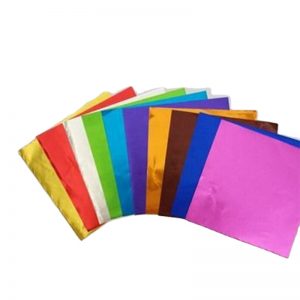The science behind cheese wrapping involves understanding the various chemical, physical, and microbiological processes that occur during the aging and storage of cheese. Proper cheese wrapping is essential to maintain the cheese’s quality, safety, and flavor. Here are some key aspects of the science behind cheese wrapping:
- Moisture Control: Cheese is composed of water, proteins, fats, and other components. The right wrapping paper allows the cheese to maintain its moisture balance. Too much moisture can lead to spoilage and mold growth, while excessive drying can cause the cheese to become hard and lose its flavor.
- Gas Exchange: Some cheeses undergo fermentation processes that produce gases, such as carbon dioxide. Wrapping paper must allow controlled gas exchange to prevent the buildup of excess gases, which could negatively impact the cheese’s texture and flavor.
- Microbial Growth: Cheese wrapping paper plays a role in controlling microbial growth on the cheese’s surface. Some papers are treated with antimicrobial agents to inhibit the growth of unwanted molds and bacteria, ensuring the cheese remains safe to consume.
- Oxygen Permeability: Different cheeses have varying oxygen requirements during the aging process. Wrapping paper must provide the appropriate level of oxygen permeability to support the cheese’s unique aging and flavor development needs.
- Rind Formation: Some cheeses develop a rind during aging, which adds to their flavor and texture. Wrapping paper can influence the rind’s formation and characteristics by controlling the cheese’s exposure to air.
- Proteolysis and Lipolysis: These are enzymatic processes that break down proteins and fats, respectively, during cheese aging. The choice of wrapping paper can influence the rate of these processes and, consequently, the cheese’s flavor and texture development.
- Preventing Off-Flavors: Cheese can easily absorb odors and flavors from its environment. Wrapping paper acts as a protective barrier, preventing the cheese from picking up off-flavors and ensuring its taste remains true to its intended characteristics.
- Physicochemical Changes: Wrapping paper can affect the pH and moisture migration within the cheese, influencing its texture, structure, and overall quality.
- Sustainability Considerations: As consumers become more environmentally conscious, the science of cheese wrapping also involves developing eco-friendly alternatives that reduce packaging waste and the carbon footprint of cheese production and distribution.
Cheese producers and scientists continually study and refine cheese wrapping techniques to optimize cheese quality and shelf life. Factors like cheese type, fat content, desired aging characteristics, and market preferences all play a role in determining the most suitable wrapping approach. Advances in food packaging technology, including biodegradable and compostable materials, further contribute to the science of sustainable cheese wrapping.




















